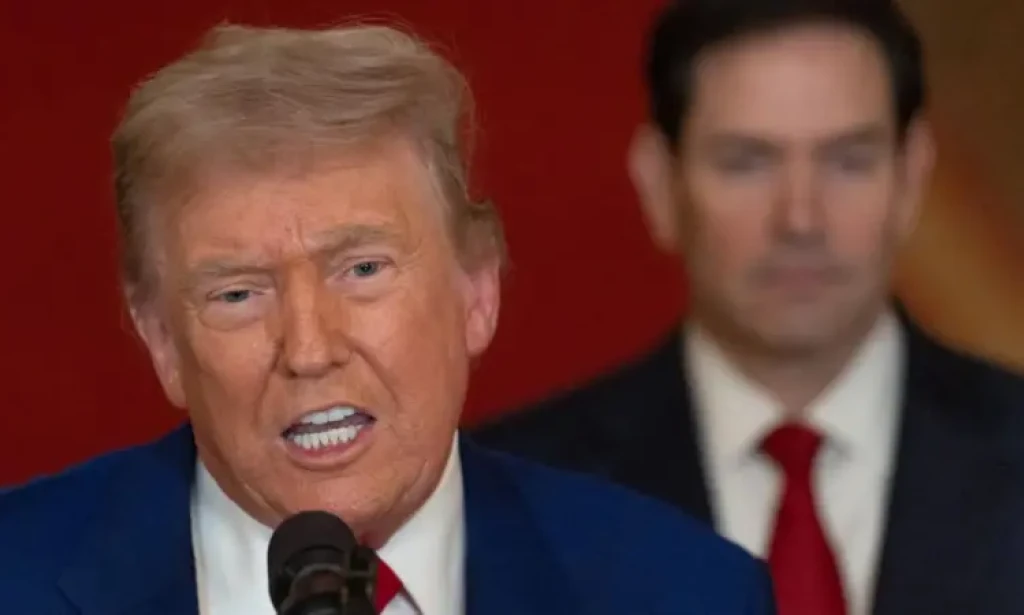"Monumental Damage": Trump Hails Success of US Strikes on Iran's Nuclear Program, But Uncertainty Lingers
Washington D.C. – June 22, 2025 – In the wake of a highly anticipated and decisive military operation, US President Donald Trump has declared the damage inflicted on Iran's nuclear sites to be "monumental," asserting the strikes were "hard and accurate" and showcased "great skill" by the American military. His pronouncements, posted on Truth Social, come as the world grapples with the full implications of the US's direct intervention in the escalating conflict with Iran.
Overnight, the United States launched what the Pentagon dubbed "Operation Midnight Hammer," a coordinated assault involving seven B-2 Spirit stealth bombers deploying 14 GBU-57 Massive Ordnance Penetrator (MOP) "bunker-buster" bombs on the deeply buried Fordow and Natanz enrichment facilities. Additionally, over two dozen Tomahawk cruise missiles, launched from a US submarine, targeted the Isfahan nuclear technology and research center. This marked the first operational use of the formidable GBU-57 MOPs, designed to penetrate hardened underground targets.
President Trump's confident declaration of "monumental" damage echoes earlier statements from US Defense Secretary Pete Hegseth and Air Force Chief Dan Caine, who reported "extremely severe damage and destruction" at all three targeted sites. General Caine, Chairman of the Joint Chiefs of Staff, characterized the mission as the "largest B-2 operational strike in U.S. history" and praised the "complex, tightly timed maneuver" that included decoys and fighter escorts to maintain surprise.
However, the precise extent of the damage and its long-term impact on Iran's nuclear capabilities remain subjects of intense scrutiny and conflicting reports. Satellite imagery released by Maxar Technologies shows significant visible impacts. At Fordow, located deep within a mountain, images reveal new craters and potential collapsed tunnel entrances on the surface above the underground complex. At Natanz, a new crater approximately 5.5 meters in diameter is visible directly over a part of the underground facility. Isfahan appears to have suffered extensive building damage.
Despite these visual confirmations, the International Atomic Energy Agency (IAEA), the UN's nuclear watchdog, has offered a more cautious assessment, particularly concerning Fordow.7 IAEA Director General Rafael Grossi stated that while Fordow was "directly impacted," the "degree of damage inside the uranium enrichment halls can't be determined with certainty" due to its deeply buried and fortified nature. He confirmed, however, that Natanz was "completely destroyed" and Isfahan sustained "very significant damage." Crucially, the IAEA and Iran's nuclear agency have both reported no increase in off-site radiation levels, allaying immediate fears of a widespread radiological release.
Adding to the complexity, a senior Iranian source told Reuters that most of the highly enriched uranium at the Fordow nuclear plant had been moved to an undisclosed location prior to the US attack.9 This claim, if true, could significantly complicate the US's objective of setting back Iran's nuclear program. Israeli Prime Minister Benjamin Netanyahu, while praising the US strikes, also hinted at possessing "interesting intel" on the whereabouts of Iran's 60% enriched uranium, a level just a short technical step away from weapons-grade.
The discrepancy between the US's emphatic claims of "obliteration" and the more nuanced assessments from the IAEA and Iranian sources underscores the inherent difficulties in verifying the true impact of such a clandestine operation. While the visual evidence points to substantial disruption, the long-term strategic implications of the strikes, particularly concerning Iran's remaining nuclear material and its potential for reconstitution, are still being evaluated.
As the international community grapples with this dramatic escalation, the focus now shifts to Iran's promised "response" and the potential for a wider regional conflict. The US, while celebrating its military success, has also warned of "far greater" attacks if Iran retaliates, highlighting the precarious path ahead in the Middle East.

You must be logged in to post a comment.